Effective stress management techniques for children are crucial in promoting their emotional well-being. Encouraging regular physical exercises, such as sports or yoga, helps release tension and promotes relaxation.
Teaching mindfulness and deep breathing exercises empowers kids to cope with stressors and focus on the present moment. Creating a supportive environment where children feel safe to express their emotions and talk about their concerns is vital. These powerful techniques empower kids to navigate stress and foster their overall resilience.
Table of contents
- Introduction
- Understanding Childhood Stress
- Technique 1: Deep Breathing Exercises
- Technique 2: Mindfulness and Meditation
- Technique 3: Physical Exercise and Play
- Technique 4: Art Therapy and Creative Expression
- Technique 5: Journaling and Emotional Expression
- Technique 6: Positive Self-Talk and Affirmations
- Technique 7: Relaxation Techniques and Sensory Play
- Technique 8: Time Management and Prioritization
- Technique 9: Healthy Lifestyle Habits
- Technique 10: Social Support and Communication
- Conclusion
- Frequently Asked Questions
Introduction
Stress management is of utmost importance for children as it directly impacts their overall well-being. Stress can have profound effects on children’s physical, emotional, and cognitive health. Prolonged exposure to stressors can lead to various negative consequences, such as anxiety, depression, and behavioral issues.
It can also affect their academic performance, social relationships, and self-esteem. Additionally, chronic stress in childhood can increase the risk of developing long-term health problems later in life.
By teaching children effective stress management techniques, we equip them with the skills to cope with challenges, regulate their emotions, and maintain a healthy balance in their lives. This helps in promoting their mental health, fostering resilience, and enhancing their overall quality of life.
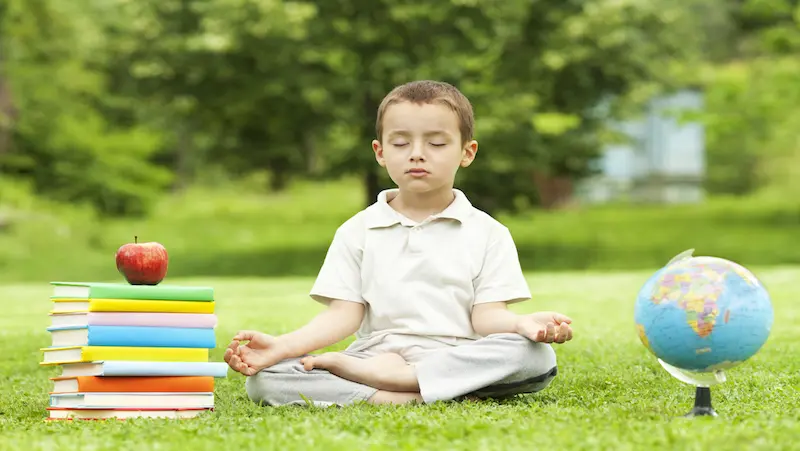
Understanding Childhood Stress
Common causes of stress in children can vary depending on their age and individual circumstances. Some common sources of stress for kids include:
1. Academic Pressure: High expectations, exams, homework overload, and fear of failure can contribute to stress in school-aged children.
2. Family Issues: Conflict between parents, divorce, financial problems, or the loss of a loved one can significantly impact a child’s emotional well-being.
3. Peer Pressure and Bullying: Social dynamics, fitting in, and dealing with bullying or exclusion from peers can cause stress and anxiety.
4. Transitions and Changes: Moving to a new school, changing neighborhoods, or adjusting to a new family structure can be stressful for children.
5. Overloaded Schedules: Engaging in too many extracurricular activities, overscheduling, and lack of downtime can lead to stress and exhaustion.
Signs and symptoms of stress in children may manifest in various ways, including:
1. Emotional Changes: Increased irritability, mood swings, frequent crying, or withdrawal from activities and social interactions.
2. Physical Symptoms: Headaches, stomachaches, changes in appetite, sleep disturbances, or fatigue.
3. Behavioral Changes: Regression in behavior, aggression, difficulty concentrating, restlessness, or excessive worrying.
4. Academic Decline: Decreased performance, lack of motivation, or difficulty focusing on tasks.
5. Emotional Reactions: Increased sensitivity, excessive fears or worries, or heightened emotional responses.
It’s important for parents and caregivers to be aware of these signs and provide appropriate support and intervention when necessary to help children effectively manage their stress.
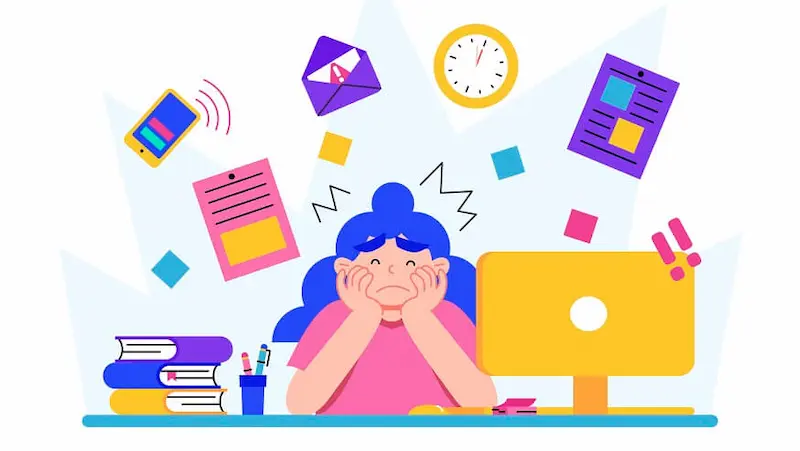
Technique 1: Deep Breathing Exercises
Deep breathing techniques are powerful tools for managing stress and promoting relaxation. Here’s a step-by-step guide to teaching kids deep breathing:
1. Find a Comfortable Position: Encourage the child to sit or lie down in a comfortable position, with their back straight and their eyes closed or focused gently on a fixed point.
2. Take a Deep Breath: Instruct the child to take a slow, deep breath in through their nose, filling their lungs with air. They can imagine filling their belly like a balloon.
3. Hold the Breath: Ask the child to hold their breath for a brief moment, allowing them to feel the sensation of the air filling their body.
4. Exhale Slowly: Instruct the child to exhale slowly through their mouth, releasing the breath in a controlled manner. Encourage them to imagine blowing out imaginary candles or a feather.
5. Repeat: Guide the child to repeat this deep breathing pattern, taking slow, deep breaths in, holding briefly, and exhaling slowly. Encourage them to focus on their breath and the sensations in their body.
Benefits of deep breathing for stress reduction include:
1. Calms the Nervous System: Deep breathing activates the parasympathetic nervous system, which helps counteract the “fight-or-flight” response and promotes a state of relaxation.
2. Reduces Anxiety and Stress: Deep breathing increases oxygen flow, decreases heart rate, and lowers blood pressure, leading to a reduction in anxiety and stress levels.
3. Enhances Focus and Clarity: Deep breathing provides a moment of mindfulness and helps clear the mind, improving concentration and mental clarity.
4. Promotes Emotional Regulation: Deep breathing allows children to regulate their emotions by providing a tool to manage and cope with intense feelings.
5. Improves Physical Well-being: Deep breathing can alleviate physical symptoms of stress such as headaches, muscle tension, and digestive issues.
Teaching children deep breathing techniques empowers them with a simple yet effective tool they can use anytime, anywhere, to manage stress, find calmness, and promote overall well-being.

Technique 2: Mindfulness and Meditation
Mindfulness and meditation offer valuable practices for children to cultivate focus, self-awareness, and emotional well-being. Mindfulness involves paying attention to the present moment without judgment, while meditation is the intentional practice of focusing the mind. Here’s a brief introduction to mindfulness and meditation for kids:
Mindfulness Exercises for Children:
1. Body Scan: Have the child lie down comfortably and guide them to focus on each part of their body, from head to toe, noticing any sensations or feelings without judgment.
2. Mindful Breathing: Encourage the child to pay attention to their breath, noticing the sensations of inhaling and exhaling. They can count their breaths or focus on the rise and fall of their belly.
Elevate Focus and Calmness with Mindfulness Breathing for Kids Check This Out to Empower Your Children
3. Five Senses Exploration: Guide the child to explore their surroundings using their five senses, noticing what they see, hear, smell, taste, and touch. This exercise helps anchor them in the present moment.
Benefits of Mindfulness in Managing Stress:
1. Stress Reduction: Mindfulness helps children develop resilience and manage stress by fostering a calm and centered mindset, reducing anxiety, and promoting relaxation.
2. Emotional Regulation: By cultivating awareness of their thoughts and emotions, mindfulness empowers children to respond to challenging situations with greater self-control and emotional regulation.
3. Improved Focus and Concentration: Regular mindfulness practice enhances children’s ability to concentrate and stay present, which can positively impact their academic performance and daily activities.
Boost Focus and Calm: Engage with Mindfulness Exercises for kids That Enhance Concentration and Inner Balance.
4. Enhanced Self-Awareness: Mindfulness promotes self-reflection and self-discovery, allowing children to develop a deeper understanding of themselves, their needs, and their emotions.
5. Increased Empathy and Compassion: Mindfulness nurtures empathy and compassion towards oneself and others, fostering positive relationships and a sense of interconnectedness.
Introducing mindfulness and meditation to children equips them with valuable skills for navigating stress, enhancing their overall well-being, and promoting a balanced and mindful approach to life.
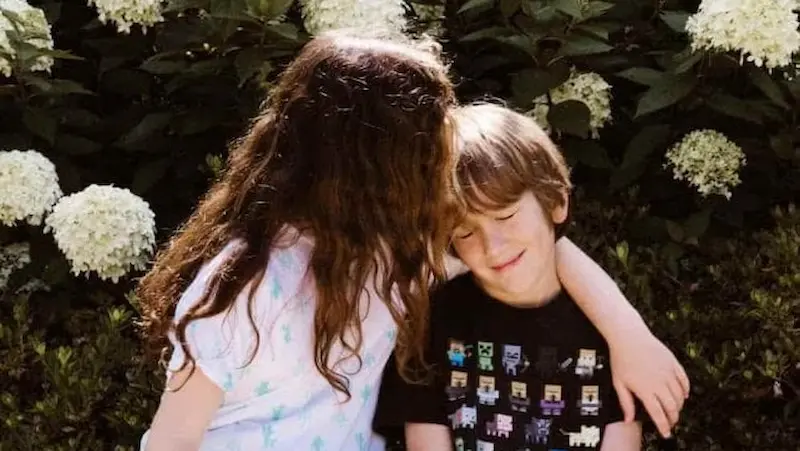
Technique 3: Physical Exercise and Play
Physical activity plays a crucial role in stress relief and overall well-being. Here’s why it’s important:
1. Stress Reduction: Engaging in physical activity helps reduce stress levels by promoting the release of endorphins, which are natural mood-boosting chemicals in the brain. It can also distract from negative thoughts and provide an outlet for pent-up emotions. Exercise helps regulate the production of stress hormones like cortisol and adrenaline.
2. Mood Enhancement: Regular physical activity has been shown to improve mood and reduce symptoms of anxiety and depression. It stimulates the production of neurotransmitters like serotonin, which contributes to feelings of happiness and well-being.
3. Energy Boost: Exercise increases blood flow and oxygen delivery to the body, providing a natural energy boost and combating feelings of fatigue or lethargy often associated with stress.
4. Improved Sleep: Physical activity can promote better sleep quality, which is essential for stress management. It helps regulate the sleep-wake cycle and promotes a more restful and rejuvenating sleep. Learn about programs for kids.
Fun outdoor and indoor activities for stress management include:
1. Outdoor Activities: Bike riding, hiking, swimming, playing sports, gardening, or simply taking a walk in nature.
2. Indoor Activities: Dance or fitness classes, yoga or Pilates, indoor rock climbing, martial arts, or even interactive video games that encourage movement.
3. Artistic and Creative Activities: Painting, drawing, playing a musical instrument, or engaging in crafts can be both enjoyable and therapeutic.
4. Team or Group Activities: Joining a sports team, dance group, or martial arts class can provide opportunities for social connection and stress relief.
By engaging in physical activity, children release endorphins, natural “feel-good” chemicals in the brain. These endorphins contribute to improved mood and reduced stress levels. Simultaneously, exercise reduces the production of stress hormones like cortisol and adrenaline, promoting a balanced stress response. Encouraging regular physical activity in children helps them manage stress more effectively and maintain their overall well-being.
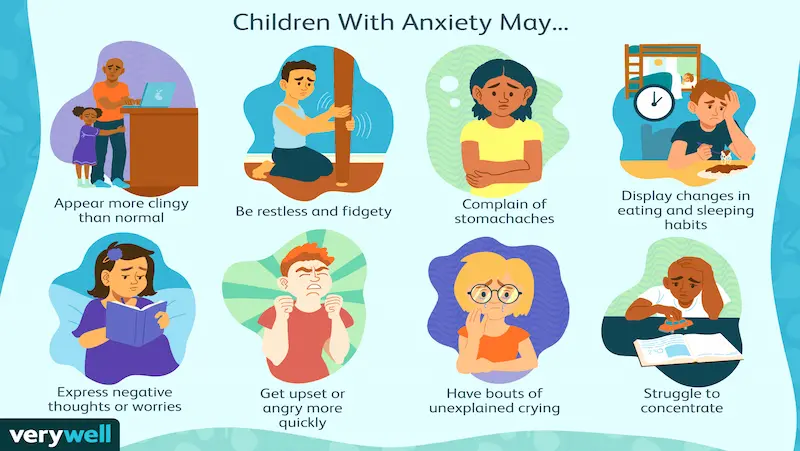
Technique 4: Art Therapy and Creative Expression
Art and creativity can be powerful tools for children to manage stress and promote emotional well-being. Here’s a brief overview of art therapy techniques for stress relief and the importance of encouraging creative expression:
Art Therapy Techniques for Stress Relief:
1. Drawing or Painting: Children can use drawing or painting as a form of self-expression to explore their emotions, release stress, and communicate their thoughts and feelings.
2. Collage Making: Creating collages using images, colors, and textures allows children to visually represent their experiences, desires, and emotions in a symbolic and therapeutic way.
3. Clay or Play-Doh Sculpting: Working with clay or Play-Doh provides a tactile and sensory experience that can help children relax, express themselves, and process emotions through sculpting and shaping.
Encouraging Creative Expression as a Coping Mechanism:
1. Emotional Outlet: Art and creative activities provide a safe and non-verbal outlet for children to express their emotions, including stress, anxiety, and frustration.
2. Self-Exploration: Through art, children can explore and understand their thoughts, feelings, and experiences, fostering self-awareness and self-reflection.
3. Emotional Regulation: Creative expression allows children to channel and regulate their emotions in a healthy and constructive manner, enhancing their emotional well-being and resilience.
By incorporating art and creative activities into children’s lives, we provide them with a valuable tool for managing stress, expressing themselves, and promoting emotional well-being. It encourages self-discovery, resilience, and a healthy coping mechanism that can positively impact their overall quality of life.

Technique 5: Journaling and Emotional Expression
Journaling is a powerful tool for emotional release and can greatly benefit children in managing stress. Here’s why journaling is effective for emotional release, along with prompts and exercises for stress management through writing:
The Power of Journaling for Emotional Release:
1. Self-Reflection: Journaling allows children to reflect on their thoughts, emotions, and experiences. It provides a space for self-discovery and gaining insights into their stressors and triggers.
2. Emotional Expression: Writing in a journal provides a safe and private outlet for children to express and release their emotions. It allows them to freely explore their feelings without judgment or inhibition.
Cultivating Emotional Intelligence: Discover the Benefits of Teaching Kids About Emotions for Lifelong Resilience and Communication Skills
3. Processing and Problem-Solving: Journaling helps children process challenging situations and work through problems. It encourages them to think critically, find solutions, and gain perspective on their stressors.
Prompts and Exercises for Stress Management through Writing:
1. Gratitude Journaling: Encourage children to write down things they are grateful for each day. This practice fosters a positive mindset and helps shift their focus from stressors to moments of joy and appreciation.
2. Worry Journal: Create a worry journal where children can write down their worries and concerns. Encourage them to revisit the journal at a later time and reflect on whether those worries were resolved or not, helping them gain perspective.
3. Future Self-Letter: Have children write a letter to their future selves, expressing their hopes, dreams, and aspirations. This exercise encourages optimism and forward-thinking, providing a sense of motivation and inspiration.
Creating a Safe Space for Kids to Express Their Feelings:
1. Confidentiality and Privacy: Assure children that their journal is a personal and private space where they can freely express themselves without fear of judgment or consequences.
2. Non-Critical Environment: Encourage children to write without worrying about grammar, spelling, or punctuation. Emphasize that it’s the process of expression that matters, not perfection.
3. Active Listening and Validation: When children share their journal entries or discuss their feelings, actively listen and validate their emotions. Create an open and non-judgmental space for them to feel heard and understood.
By incorporating journaling into their routine and creating a safe space for expression, children can effectively manage stress, process emotions, and cultivate emotional well-being.
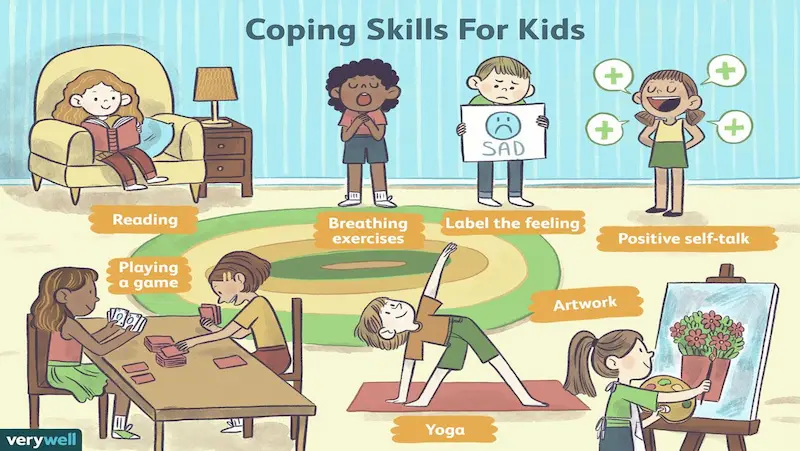
Technique 6: Positive Self-Talk and Affirmations
Teaching kids to reframe negative thoughts is a valuable skill that can help them manage stress and build resilience. Here’s how to encourage positive self-talk:
1. Identify Negative Thoughts: Teach children to recognize negative thoughts or self-critical statements. Encourage them to pay attention to the words they use when talking to themselves.
2. Challenge Negative Thoughts: Help children question the accuracy of negative thoughts by asking them for evidence that supports or contradicts those thoughts. Encourage them to consider alternative perspectives.
3. Reframe with Positive Affirmations: Guide children to replace negative thoughts with positive affirmations. Examples include “I am capable of handling challenges,” “I am strong and resilient,” or “I can learn from my mistakes.”
4. Encourage Realistic Thinking: Help children develop a balanced view of themselves and their situations. Encourage them to acknowledge their strengths and areas of growth while being realistic about their limitations.
5. Practice Gratitude: Teach children to focus on the positive aspects of their lives by regularly expressing gratitude. Encourage them to write or verbalize things they are grateful for each day.
Strategies for Incorporating Positive Self-Talk in Daily Life:
1. Role Modeling: Be a positive role model by using positive self-talk in your own life. Children learn through observation, so hearing positive self-talk from adults can encourage them to adopt the same practice.
2. Daily Affirmations: Encourage children to start their day with positive affirmations. They can write or say affirmations that resonate with them, reinforcing positive beliefs about themselves.
3. Positive Self-Talk Reflection: At the end of each day, have children reflect on moments when they used positive self-talk or reframed negative thoughts. Teach children to interrupt negative thoughts by using a visual cue or saying “stop” in their minds. Celebrate their efforts and successes.
4. Encouraging Supportive Language: Foster an environment of positive communication by encouraging children to use supportive and encouraging language when interacting with others. This promotes positive self-talk and a positive social environment.
By teaching children to reframe negative thoughts and incorporate positive self-talk, we empower them to cultivate a positive mindset and manage stress more effectively. These strategies can help children develop a resilient and optimistic outlook, leading to improved well-being and emotional resilience.

Technique 7: Relaxation Techniques and Sensory Play
Introducing relaxation techniques to children is beneficial for promoting stress relief and emotional well-being. Here’s an introduction to relaxation techniques for kids, including sensory play ideas for stress relief and the use of calming tools and techniques:
Relaxation Techniques for Kids:
1. Deep Breathing: Teach children deep breathing exercises, guiding them to take slow, deep breaths to promote relaxation and calmness.
2. Progressive Muscle Relaxation: Guide children through a sequence of tensing and relaxing different muscle groups to release tension and promote physical and mental relaxation.
3. Visualization: Encourage children to imagine a peaceful and calming place, guiding them through visualizations that engage their senses and create a sense of tranquility.
Sensory Play Ideas for Stress Relief:
1. Sensory Bins: Create sensory bins filled with materials like rice, sand, or water beads, along with various objects and tools for children to explore tactile sensations and engage their senses.
2. Calming Bottles: Make calming bottles by filling clear bottles with water, glitter, and small objects. Children can shake the bottles and watch as the glitter settles, providing a soothing visual experience.
3. Sensory Play Dough: Provide children with homemade or store-bought play dough, scented with calming essential oils. The tactile experience of squishing and molding the dough can promote relaxation.
4. Nature Walks: Take children on nature walks, encouraging them to explore and interact with their surroundings. Nature offers various sensory experiences, such as feeling the textures of leaves or listening to the sounds of birds.
Step into the World of Fun: Interesting Outdoor Games for Kids that Spark Imagination, Adventure, and Unforgettable Memories
Using Calming Tools and Techniques:
1. Calming Music: Play soothing music or nature sounds to create a calming atmosphere. Children can listen to music during relaxation exercises or as background ambiance.
2. Fidget Toys: Provide fidget toys like stress balls, squishy toys, or fidget spinners to help children channel nervous energy and find relaxation through tactile stimulation.
3. Calming Corner: Create a designated space at home or in the classroom as a calming corner. Fill it with soft cushions, blankets, and comforting objects where children can retreat for relaxation and self-regulation.
Introducing relaxation techniques, sensory play, and calming tools to children provides them with effective strategies for managing stress and promoting relaxation. These activities encourage sensory exploration, mindfulness, and self-awareness, fostering a sense of calmness and well-being in children’s lives.
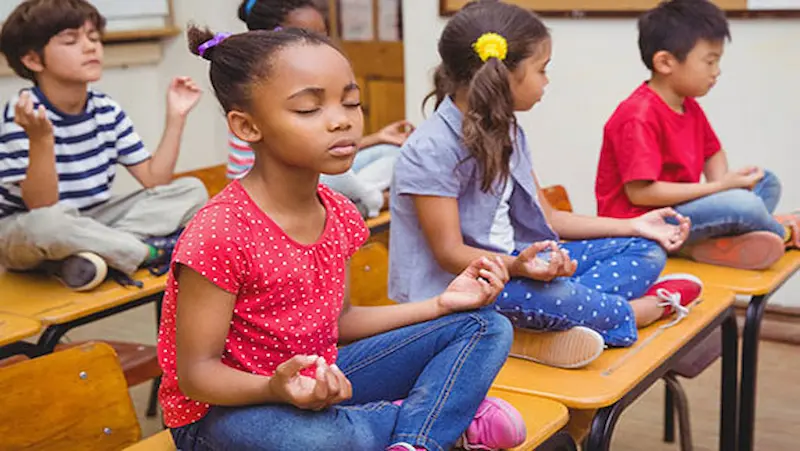
Technique 8: Time Management and Prioritization
The relationship between stress and time management is significant. Here are three points highlighting this relationship:
Stress and Time Management:
1. Increased Productivity: Effective time management helps children complete tasks in a timely manner, reducing the risk of procrastination and last-minute rushes. By managing their time well, children can accomplish their responsibilities, which in turn reduces stress caused by feeling overwhelmed or rushed.
Exploring Art and Creativity: Engaging in art-related activities like drawing for kids and art for kids
2. Reduced Overload: Poor time management can lead to an overwhelming workload, causing stress for children. By effectively managing their time, children can break tasks into manageable chunks, allocate time appropriately, and avoid feeling overwhelmed by a mountain of responsibilities.
3. Enhanced Focus and Relaxation: Good time management allows children to allocate dedicated time for tasks, creating a sense of structure and focus. When they can focus on one task at a time, they are less likely to experience distractions and can work more efficiently. This, in turn, creates opportunities for relaxation and leisure, reducing stress levels.
Tips for Teaching Kids Effective Time Management Skills:
1. Set Clear Goals and Priorities: Help children identify their goals and prioritize their tasks. Teach them to differentiate between important and less important tasks, enabling them to allocate their time effectively.
2. Create a Schedule or Planner: Introduce children to the concept of a schedule or planner. Teach them how to organize their time, set deadlines, and allocate time slots for specific tasks. Encourage them to refer to their schedule regularly to stay on track.
3. Break Tasks into Smaller Steps: Teach children the importance of breaking tasks into smaller, manageable steps. By doing so, children can approach tasks more easily, avoid procrastination, and feel a sense of accomplishment as they complete each step.
Helping Children Prioritize Tasks and Responsibilities:
1. Teach Decision-Making Skills: Guide children in making informed decisions about which tasks or responsibilities are most important and need to be addressed first. Encourage them to consider factors such as deadlines, urgency, and impact.
2. Encourage Time Evaluation: Help children assess the time required for different tasks. This helps them understand the importance of prioritization and ensures they allocate appropriate time for each task.
3. Support Accountability: Promote accountability by encouraging children to set deadlines and hold themselves responsible for completing tasks. This helps them develop a sense of ownership and avoid unnecessary stress caused by procrastination.
By teaching kids effective time management skills, we equip them with valuable tools to reduce stress and handle their responsibilities more efficiently. Helping children prioritize tasks and responsibilities enables them to allocate their time effectively, enhance focus, and create a sense of accomplishment, leading to reduced stress and improved overall well-being.
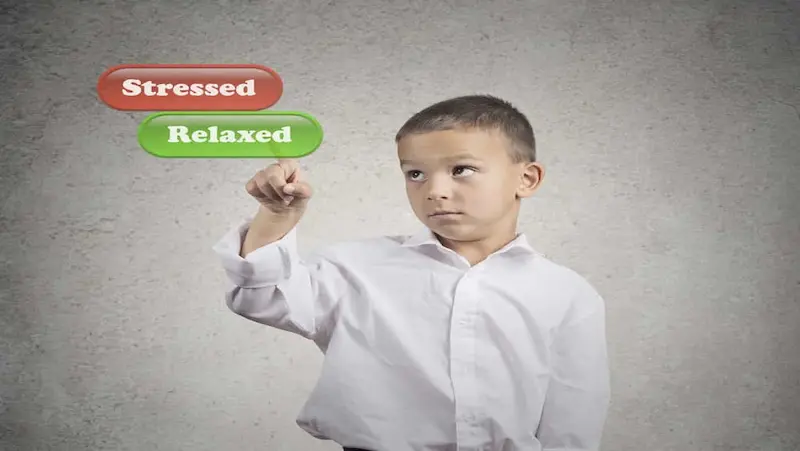
Technique 9: Healthy Lifestyle Habits
The impact of nutrition and sleep on stress levels is significant. Here are three points highlighting their importance:
Impact of Nutrition on Stress Levels:
1. Balanced Diet: Consuming a balanced diet rich in whole grains, fruits, vegetables, lean proteins, and healthy fats provides essential nutrients that support the body’s stress response system. Nutrient deficiencies can contribute to increased stress levels, while a well-rounded diet helps regulate mood and energy levels.
2. Limiting Stimulants: Excessive intake of caffeine, sugary foods, and processed snacks can negatively impact stress levels. These stimulants can disrupt sleep patterns, increase anxiety, and affect overall well-being. Encourage children to moderate their intake of these items to promote a more balanced and stable mood.
3. Hydration: Proper hydration plays a vital role in stress management. Dehydration can lead to fatigue, irritability, and difficulty concentrating, which can exacerbate stress levels. Encourage children to drink an adequate amount of water throughout the day to maintain hydration and support overall well-being.
Healthy Eating Tips for Stress Management:
1. Incorporate Nutrient-Dense Foods: Encourage children to include nutrient-dense foods in their diet, such as fruits, vegetables, whole grains, lean proteins, and healthy fats. These foods provide essential vitamins, minerals, and antioxidants that support the body’s stress response and overall health.
2. Balanced Meals and Snacks: Teach children the importance of balanced meals and snacks that include a combination of carbohydrates, proteins, and healthy fats. Balanced meals help maintain stable blood sugar levels, preventing energy crashes and mood fluctuations.
3. Mindful Eating: Promote mindful eating practices, such as eating slowly, savoring flavors, and paying attention to hunger and fullness cues. Mindful eating helps children develop a healthy relationship with food, reduce emotional eating, and manage stress-related eating patterns.
Impact of Sleep on Stress Levels:
1. Rest and Recovery: Sufficient sleep allows the body and mind to rest, recover, and recharge. Quality sleep supports optimal brain function, emotional regulation, and stress management.
2. Hormonal Balance: During sleep, the body regulates stress hormones, such as cortisol, and releases hormones that promote relaxation and well-being, such as melatonin. Disrupted sleep patterns can lead to imbalances in these hormones, contributing to increased stress levels.
3. Cognitive Function and Resilience: A good night’s sleep enhances cognitive function, memory consolidation, and problem-solving abilities. Adequate sleep equips children with the cognitive resilience necessary to handle stressors effectively and maintain emotional well-being.
Establishing Good Sleep Habits for Stress Reduction:
1. Consistent Bedtime Routine: Help children establish a consistent bedtime routine that includes relaxing activities, such as reading, taking a warm bath, or practicing deep breathing exercises. A regular routine signals the body to prepare for sleep and promotes better sleep quality.
2. Create a Sleep-Friendly Environment: Ensure the bedroom environment is conducive to sleep by keeping it cool, quiet, and dark. Limit exposure to electronic devices before bed as the blue light can disrupt sleep patterns.
3. Consistent Sleep Schedule: Encourage children to maintain a consistent sleep schedule by going to bed and waking up at the same time every day, even on weekends. A regular sleep routine helps regulate the body’s internal clock and promotes better sleep quality.
By emphasizing healthy eating habits and prioritizing good sleep hygiene, we can positively impact children’s stress levels. Nutrient-dense foods and balanced meals support the body’s stress response, while adequate sleep allows for rest, hormone regulation, and cognitive resilience. These lifestyle factors play a crucial role in managing stress and promoting overall well-being.

Technique 10: Social Support and Communication
Importance of a Strong Support System for Stress Management:
Encouraging Open Communication with Parents, Friends, and Teachers:
1. Emotional Outlet: Open communication with parents, friends, and teachers provides children with a safe space to express their thoughts, emotions, and stressors. Sharing their experiences and concerns allows for emotional release, validation, and the opportunity to gain perspective and support.
2. Problem-Solving and Guidance: Engaging in open conversations with trusted individuals allows children to seek advice, guidance, and different perspectives on managing stress. Parents, friends, and teachers can offer insights, coping strategies, and practical solutions to help children navigate their stressors effectively.
3. Validation and Empathy: Sharing their feelings and experiences with a support system provides children with validation and empathy. Knowing that their emotions are heard and understood can alleviate stress, boost self-esteem, and foster a sense of belonging and support.
Building Healthy Relationships and Seeking Help When Needed:
1. Emotional Support: Strong relationships with parents, friends, and teachers provide children with emotional support during times of stress. Knowing they have reliable individuals who care about their well-being can enhance resilience and provide a sense of security.
2. Collaborative Problem-Solving: Healthy relationships foster collaborative problem-solving. Children can discuss their stressors, brainstorm solutions, and work together with their support system to find effective strategies for stress management.
3. Seeking Help: Encouraging children to seek help when needed promotes a proactive approach to stress management. Children should feel comfortable reaching out to their support system for assistance, whether it’s seeking advice, professional guidance, or additional resources to manage stress effectively.
In summary, a strong support system plays a crucial role in stress management for children. Open communication, building healthy relationships, and seeking help when needed foster a sense of support, resilience, and collaborative stress management.

Conclusion
In conclusion, stress management is a vital skill for children, and a strong support system plays a significant role in their ability to cope effectively. Encouraging open communication with parents, friends, and teachers provides children with an emotional outlet, problem-solving opportunities, and validation.
Building healthy relationships fosters emotional support, collaborative problem-solving, and a sense of security. Additionally, seeking help when needed promotes proactive stress management and empowers children to access resources and guidance.
By nurturing a robust support system, we equip children with the tools to navigate stress, build resilience, and maintain overall well-being. Together, with effective stress management techniques, a supportive network sets children on a path toward a healthier and more balanced life.
Also, BrightChamps provides a comprehensive platform for learning about money for kids, offering interactive and engaging resources that teach financial literacy, budgeting, saving, and other essential money management skills.
Frequently Asked Questions
Stress can negatively impact children’s emotional well-being, behavior, and physical health. Managing stress is crucial to promote resilience, emotional stability, and overall health in children.
Common signs and symptoms of stress in kids include changes in behavior (irritability, moodiness), difficulty sleeping, changes in appetite, physical complaints (headaches, stomachaches), and withdrawal from activities or social interaction.
Yes, stress in children can have long-term effects on their mental and physical health. Chronic stress can contribute to the development of mental health disorders, a weakened immune system, and an increased risk of various health problems later in life.
Effective relaxation techniques for kids to reduce stress include deep breathing exercises, progressive muscle relaxation, guided visualization, mindfulness activities, and engaging in calming sensory play or hobbies.
Parents and caregivers can create a calm and supportive environment for their children by fostering open communication, practicing active listening, setting consistent boundaries, modeling healthy coping strategies, and providing emotional support.
Yes, deep breathing exercises such as belly breathing, box breathing, or counting breaths can help children manage stress. These techniques promote relaxation, calm the mind, and regulate the body’s stress response.
Regular physical activity contributes to stress reduction in kids by releasing endorphins, the body’s natural mood-boosting hormones. It promotes relaxation, improves sleep quality, and provides a healthy outlet for pent-up energy and stress.
Mindfulness and meditation can help children cope with stress by promoting self-awareness, emotional regulation, and relaxation. These practices teach children to focus on the present moment and develop resilience in handling stressors.
While no specific food can directly alleviate stress, a balanced diet rich in whole grains, fruits, vegetables, lean proteins, and healthy fats provides essential nutrients that support overall well-being and can indirectly contribute to stress reduction.
Parents can teach effective problem-solving and coping skills to children by encouraging open communication, providing guidance and support, modeling healthy coping strategies, and fostering a growth mindset for resilience.


 We are an army of educators and passionate learners from BrightChamps family, committed to providing free learning resources to kids, parents & students.
We are an army of educators and passionate learners from BrightChamps family, committed to providing free learning resources to kids, parents & students.













